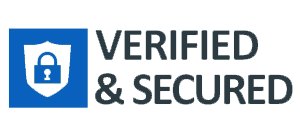
Small businesses are a vital part of the economy and American life. They have been around since the beginning of the country’s booming economy, but their importance has grown over time as more people turn to them for goods and services. There are about 31.7 million small businesses in America, and according to the Small Business Administration, they create 1.5 million jobs annually and account for 64% of new jobs. In 2019 alone there were 770,609 new small business created!
However, even though they’re so important to us as consumers and providers of employment opportunities, this group has been hardly hit by the events that transpired ever since the beginning of 2020.
Between the worldwide coronavirus pandemic, lockdowns, and the economic struggles that got here with them, 2020 become a difficult year for plenty small businesses.
As we all know, there were numerous demanding situations. Businesses nevertheless weren’t prepared, mainly on the subject of finances. Many businesses had to close down temporarily, some barely survived, while others were unfortunately closed.
During the peak of the coronavirus pandemic, states commenced introducing lockdown orders and small business lenders tightened requirements. When PPP loans were introduced by the government, applications plummeted fast and funds went out even faster than that.
Two rounds of PPP funding programs ran, the maximum amount capped being at $2M million. However, for many of the small business owners on the market, the PPP programs alone weren’t enough, since the governmental programs only ran up to a certain point.
That’s where alternative lending came in. Between big banks or small ones, credit unions or alternative lenders, small businesses took any chance they could to keep their businesses afloat. And they’re continued doing it.
With vaccines in play and the financial system bouncing back, this year was already off to a better, brighter start. Many have a sturdy outlook for the future.
The programs that the government offered were great, but for many small business owners they were not enough. That’s why alternative lenders stepped in to help out with loans and credit lines when there was no other option available.
So then with all this in mind, precisely how did the small business lending map looked like pre and after the COVID-19 pandemic?
We invite you to check it out for yourself in the statistical report down below, which you can download for yourself. This way you can better study and understand the trends of small business lending before and after the pandemic.
Please provide your information for instant access to the report:


